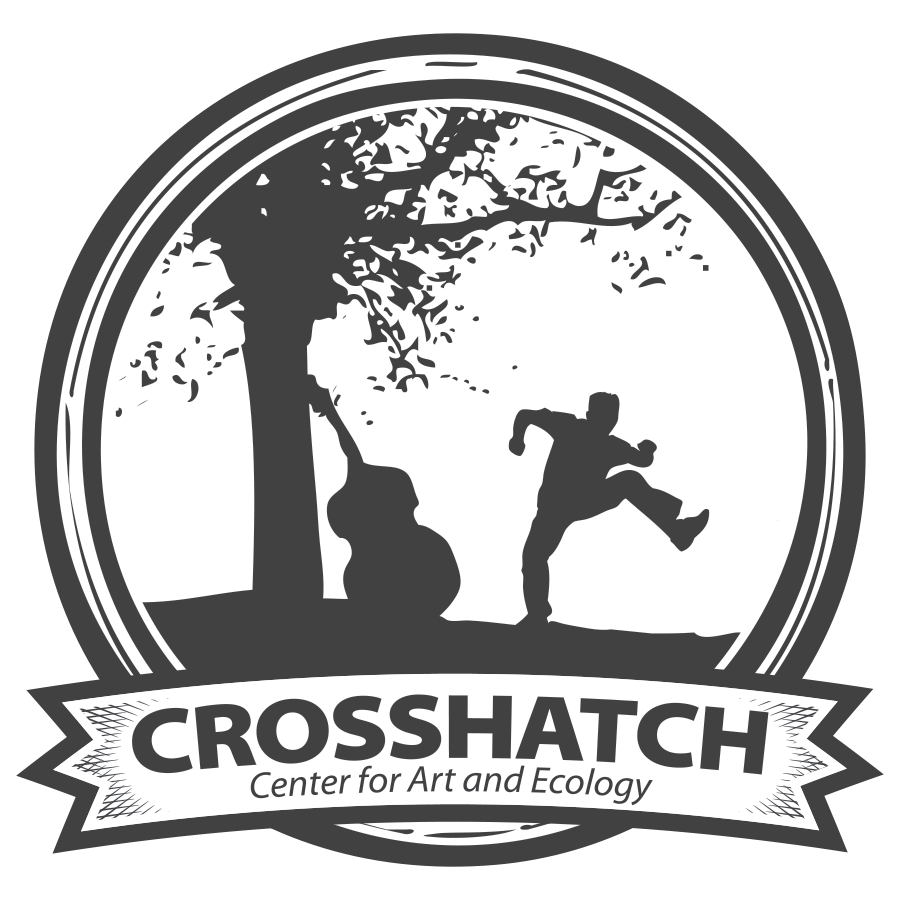“Winter Solstice”
Pen and Watercolor on Paper • 8” x 10” • Maia Hausler of Wander & Gather
In This Issue: Artists, Funding and Policy.
Why We Center Artists
by Amanda Kik || 976 words (4 minute read)
The late 1980’s and on into the 1990’s were a transitional period in arts and culture in the United States. Controversies around Andres Serrano’s Piss Christ and Robert Mapplethrope’s The Perfect Moment inspired Senators Alfonse d’Amato and Jesse Helms to lead an effort to reform the National Endowment for the Arts (NEA).
This, paired with the outcry over four performance artists whose grants were approved through a peer review process but vetoed by President George H. W. Bush’s appointee John Frohnmayer, led to sweeping changes at the NEA. (These artists came to be known as the NEA Four as lawsuits ensued.)
In that moment of high controversy, the NEA stopped funding individual artists. From that point forward, all federal money — which is also funneled through state arts agencies — would only go through arts organizations. By and large, this is still the case.
In 2000, I was in graduate school at CalArts, and joined five other students and faculty member Mady Shutzman in New York City for three weeks to investigate how this cultural policy was impacting the arts. The goal was to take the temperature of the art world and report back to art students who would be graduating into this new territory.
It was an extraordinary three weeks. We sat in the apartment of Holly Hughes, one of the NEA Four, and listened as she told us her story of unintentionally being at the center of the culture wars. We met with the director of the Whitney Museum of American Art, and were allowed a private tour of the Whitney Biennial. We talked with the folks at Brooklyn Academy of Music, learned to juggle from a circus troupe on Coney Island, and visited artist studios in Soho. And there were late nights drinking cheap red wine in the shared kitchen of the 92nd Street Y…
The Warp — Ideas and Inspiration
|| 1 || I have a huge organizational crush on Springboard for the Arts, a great example of an organization that centers artists. Crosshatch worked with them during the pandemic to distribute emergency funds to artists across the Upper Midwest. Now, they are piloting guaranteed minimum income for artists. We’re keeping an eye on this pilot and seeing what we can learn from them.
|| 2 || It has been a great joy to work alongside Jessica Kooiman Parker as she develops and curates the visual arts program at The Alluvion, the new performance venue that Crosshatch is opening with partners Jeff Haas and Commongrounds Cooperative. We are excited to present a range of artists, from emerging to established, both local and those from further afield. The visual arts will play an integral role inside and outside of the building. If you have an artist that we should consider, shoot me an email.
|| 3 || Funding for the arts can be both difficult and problematic. Difficult because funds are scarce, particularly in rural communities and in states with miniscule public arts funding. Problematic because funding often is disproportionately more available to large, older institutions over small scrappy ones. Even less funding goes to individual artists. So it was encouraging, recently, to read about these two opportunities in Hyperallergic:
Artadia, a Brooklyn-based organization that directly funds artists, is increasing its awards to keep up with inflation. And they are making that increased funding retroactive to current grant recipients. And they are increasing their stipend to the review panel. It is great to see funders recognize that inflation means that giving the same amount of money that they were giving five years ago means actually less money. Here is the article; it is a super-quick read.
Here is an example of a funding model that helps promote equity and demonstrates trust: The Art Matters Foundation, based in New York, is rolling out a new program in which they award 15 artists grants of no-strings $7,500. Each of those artists gets to select one additional artist to receive a grant of the same size. Trusting artists to pay it forward can help reach the nooks and crannies of the art world that funders don’t otherwise access.
The Weft — News and Events
|| 1 || Your year-end contribution supports all of the work of Crosshatch, including this newsletter. Help us keep delivering these essays, videos and audio features with your donation today.
|| 2 || || 2 ||The 2023 Food and Farm Microloan Application window is now open. Applications are due February 7th. More information is available here.
|| 3 || MOFFA Organic Intensives 2023. Join the Michigan Organic Food and Farm Alliance on Saturday, January 7th, at MSU’s Plant and Soil Sciences building in East Lansing. This year’s intensives are: Keeping Outside the Box: A Comprehensive Understanding of Sustainable Beekeeping in Today’s Declining Environment; High Costs and Supply Scares of Nutrients: Overcoming Organic Crop Fertility Challenges; and Diverse, Vigorous, and Hardy Fruits and Nuts—Native and Beyond. Find more information and register here.
|| 4 || The MIFFS Michigan Family Farms Conference is coming up in late February. If you have interest in sponsoring or exhibiting, find more information here. And if you’re interested in attending, save the date—Saturday, February 25th—and stay tuned for more details.
Many thanks to the Michigan Arts & Culture Council and the National Endowment for the Arts for their support of this work.
Copyright (C) 2022 Crosshatch. All rights reserved.








